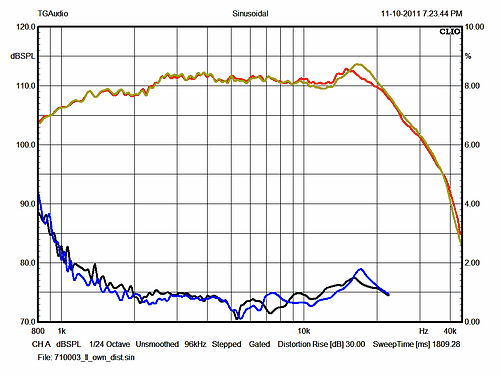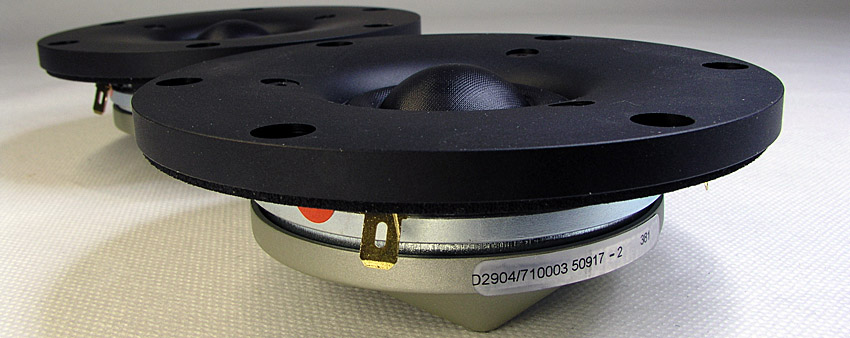|
Eight
plus One 2011 Christmas holidays' experiments. THE DRIVERS CROSSOVER CABINET CABINET PICS MEASUREMENTS SOUND
|
|
A client asked for a Wilson Audio Duette
type of speaker made from sliced paper 22W/4851T00 drivers, probably
the only pair in existence, and the 710003 tweeters. Hmm... your
money, I thought! You know point of crossover has to be taken really low
to make this happen? Not really his problem...
I've been studying the Duette and based on the measurements shown here, it looks like a speaker specifically voiced for book-shelf placement. A broad dip in the 100-500 Hz range and a rather high vent tuning making a decent response down to 50 Hz based on reviews. The vent tuning appears much too high for near-wall placement, but I reckon Duette customers will not only use this on a book-shelf, rather as a stand-mount. Making a speaker ideally suited for both scenarios is almost impossible and a couple of resistors to tune bass and treble is unlikely to be perfect in either situation. Nevertheless, tuning a similar set-up for stand-mount could be an interesting project, thus a very simple 2nd order crossover was made at 1.7 kHz and after some fine-tuning of tweeter level it was time for evaluation. The 22W bass driver is a rather "deep" driver, i.e. it has a deep cone and run full-range it has a distinct "cuppy" sound together with the inevitable beaming due to the large diameter of the cone. However, no severe peaking in the 2-6 kHz range. It has to said the sliced paper version didn't measure much different compared to what is shown at ScanSpeak website for the non-sliced version. Taking the 7100 down to 1.7 kHz was my biggest worry. Despite its wide surround it's still a 1" voice coil and from a simple 2nd order filter it's on a tough job. Bottom line is that this turned out much better than anticipated and Siri's Killer Note was reproduced as good - if not better - as any other speaker I've made. This was seriously disturbing! A 2nd order filter at 1.7 kHz, not particularly well performing with regard to phase integration! Hmm...Never say never! I more and more think this "note" problem has its solution in lack of beaming and sufficient membrane area. Crossover topology and proper phase integration appears of lesser importance. I had these disturbing results simmering for quite some time and while cleaning the attic I came across my AT-SW cabs. With their 21 liter net volume they could make a range of eight-plus-one monitors from some of my stock 8" drivers, thus this reporting on some experiments to see what can be achieved from a very simple design using basically 2nd order filters and a tweeter being able to go really low. THE DRIVERS
BACK
TO INDEX
|
|
Wilson Audio often implements tweeters in ways most diy'ers would never do. Mostly recessed ~10 mm and surrounded by damping material having square holes equidistant to the center of the dome or as here, having a hole in damping material equal to tweeter diameter and further added some star cut felt directly on tweeter's faceplate. I wanted to see how bad tweeters really measure from these surroundings because in terms of frequency response, it's not ideal. The few frequency response graphs we have from Wilson Audio speakers really do no look nice, but Wilson doesn't seem to care and value lack of early reflection more despite diffraction issues.
|
|
MEASUREMENT
21W/8555-01 + D2904/710003
MEASUREMENT NNNN + D2904/710003
For both
speakers no discontinuity
going from 8" to 1" is noticeable. Smooth all the the way. What's immediately apparent is how easy it is to move around
the listening room and not loosing level on upper-mid and treble,
which is a key feature of designs like TJL3W, SP38, SP44, Ekta and
3W-Classic. To summarise, both speakers offer solid bass from a small foot-print and a wide dispersion with absolutely no hot-spot. Placed on a book-shelf, the port can be stuffed lightly to make an aperiodic tuning better suited to cope with the inevitable room-gain. Both speakers perform surprisingly well with regard to soundstage depth and transparency despite less than ideal phase integration and lack of time-aligned drivers, features they both share with the Chario Sonnet speaker. A really good tweeter doing well down to 1 kHz is a key ingredient in getting this system right and from the distortion measurement show above the 710003 does exceptionally well down to 2 kHz only showing slightly increasing levels down to 1 kHz, nothing serious with a point of crossover at around 1.5 kHz. The 21W/8555-01 does
surprisingly well, but the suppression of the 3.5 kHz point of
resonance is not really good enough for not having a somewhat rough
presentation of strings and female vocals from time to time. The study here is only meant for demonstrating proof of concept and with the right drivers it's a viable option for making a potent two-way system from simple crossover topology. Obviously you need good measuring equipment and simulation software to get it right and the final trick is to tune the 1-5 kHz range due to the extreme dispersion of the tweeter; a key factor in voicing the speaker to render a proper perceived balance of basic notes and overtones.
|
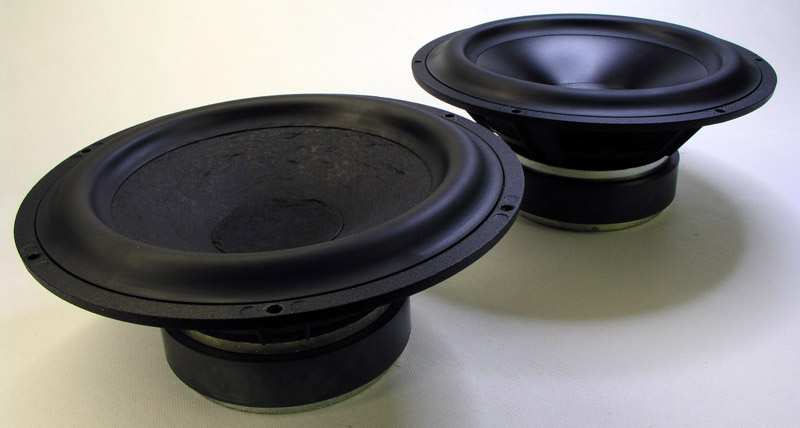
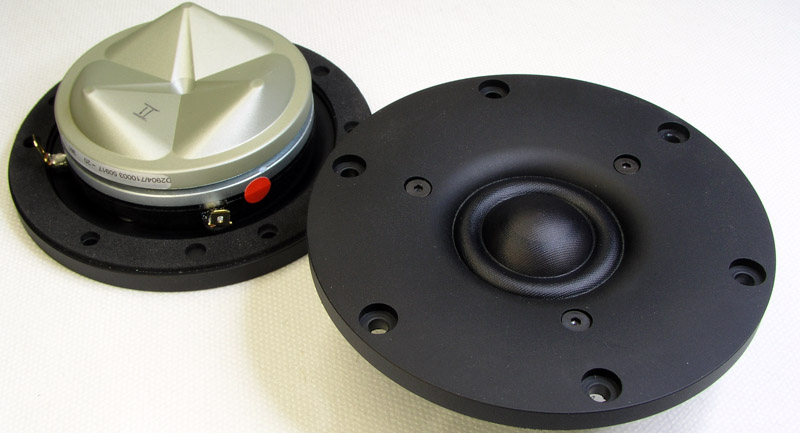









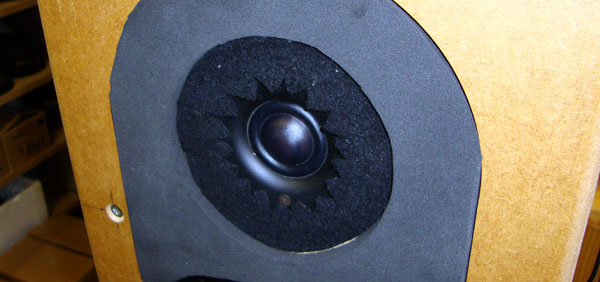
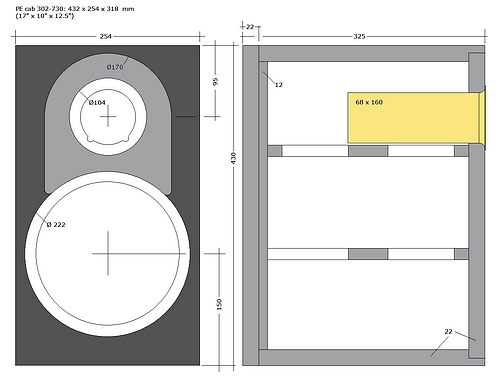
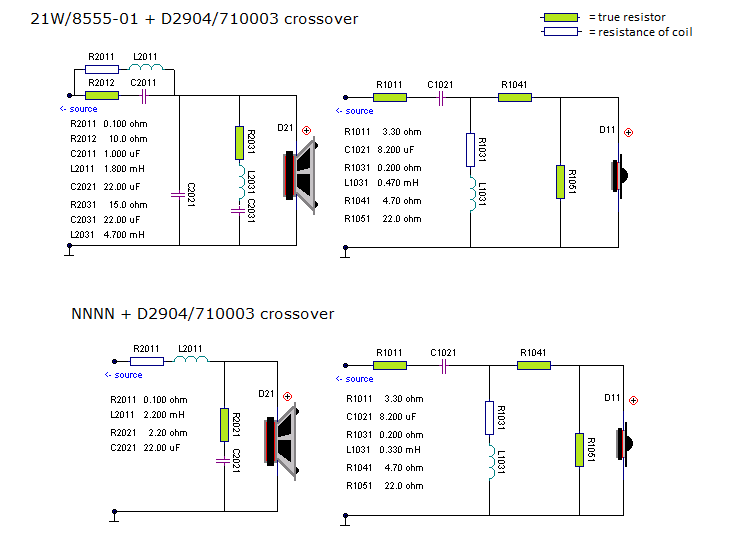
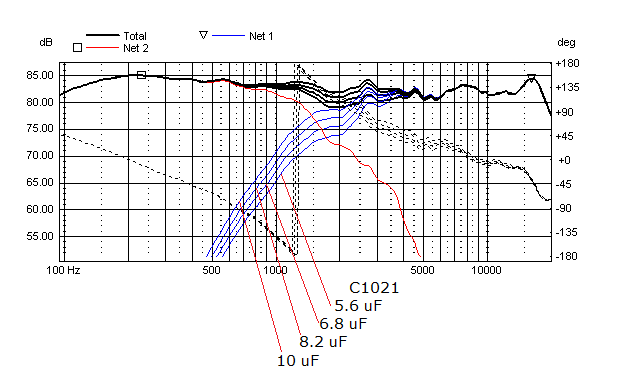
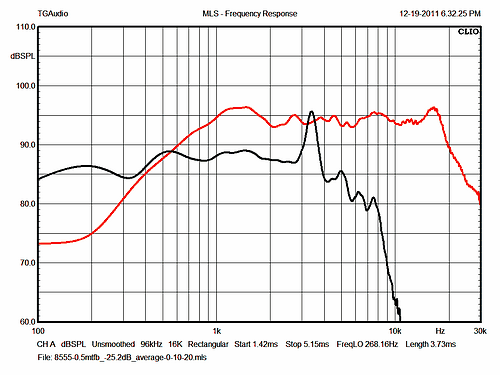
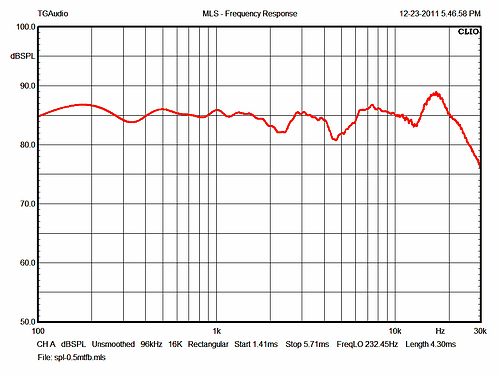
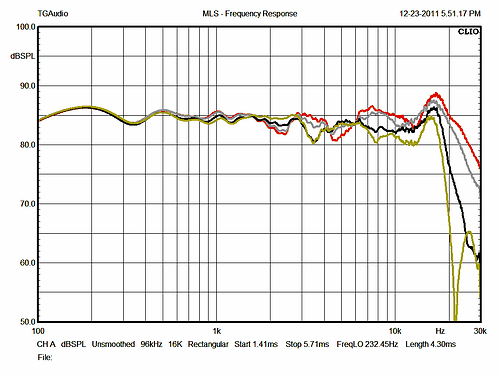
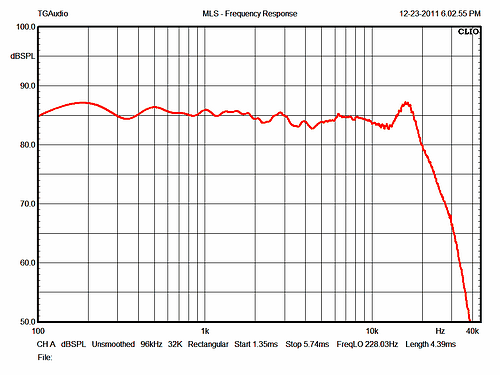
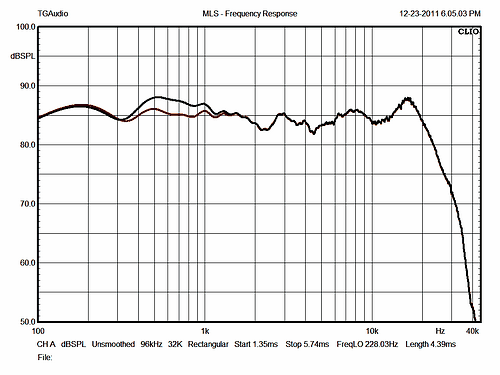
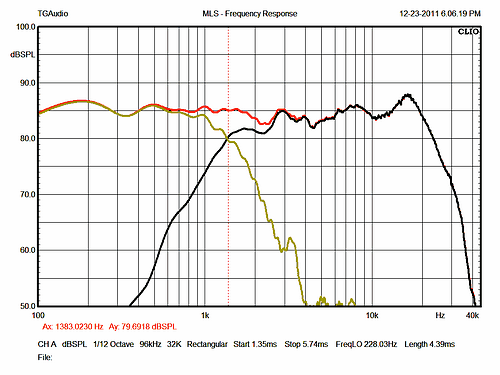
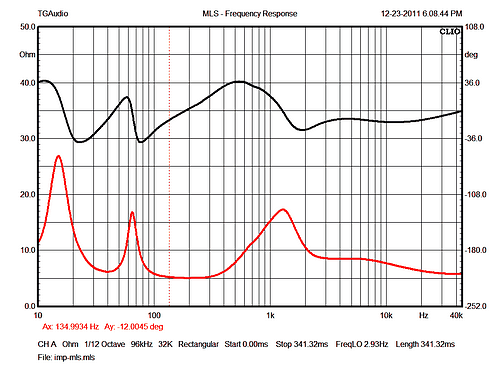
.gif)
.gif)
.gif)
.gif)
